AleaSoft Energy Forecasting, November 16, 2021. The wind energy is the electricity generation technology with the most installed capacity in Mainland Spain and the second that contributed the most to the generation mix in recent years, exerting a downward influence on market prices. This technology, together with combined cycle gas turbines, took coal out of the mix, helped to reduce GHG emissions from the electricity sector and is called to continue to be a protagonist of the energy transition in the coming years together with the photovoltaic energy.
The wind energy was already present in the electricity generation mix of Mainland Spain when the electricity market was liberalised, in 1998, and since then, it experienced significant growth that led it to be the electricity generation technology with the most installed capacity in Mainland Spain since October 2019, to be the one that contributed the most electricity to the mix in 2013 and to remain in the second place in this ranking continuously, year after year, since 2016, behind the nuclear energy. The contribution of wind energy to the generation mix in 2020 stood at 22.5%, the highest up to that time.
 Source: Prepared by AleaSoft Energy Forecasting using data from REE. Data of 2021 up to November.
Source: Prepared by AleaSoft Energy Forecasting using data from REE. Data of 2021 up to November.
 Source: Prepared by AleaSoft Energy Forecasting using data from REE.
Source: Prepared by AleaSoft Energy Forecasting using data from REE.
Influence of the wind energy production on electricity prices
Wind energy offers prices to participate in the electricity market are lower than those of other technologies, such as thermal ones. This is due to the fact that their variable costs are lower, in some cases they have Government aid, they depend on the wind, which is an uncontrolled natural resource, and for now energy storage systems are not sufficiently developed, so their opportunity cost is practically nil and they need to bid at lower prices to ensure that their offers match. This, together with the high capacity existing in the Spanish Mainland system, causes electricity market prices to be highly correlated with the wind energy production and its volatility. When the wind energy production is high, prices tend to fall, reaching values very close or equal to zero in some hours, especially when the electricity demand is lower. In the case of low wind energy production, prices tend to increase because it is necessary to resort to thermal power plants to cover the electricity demand.
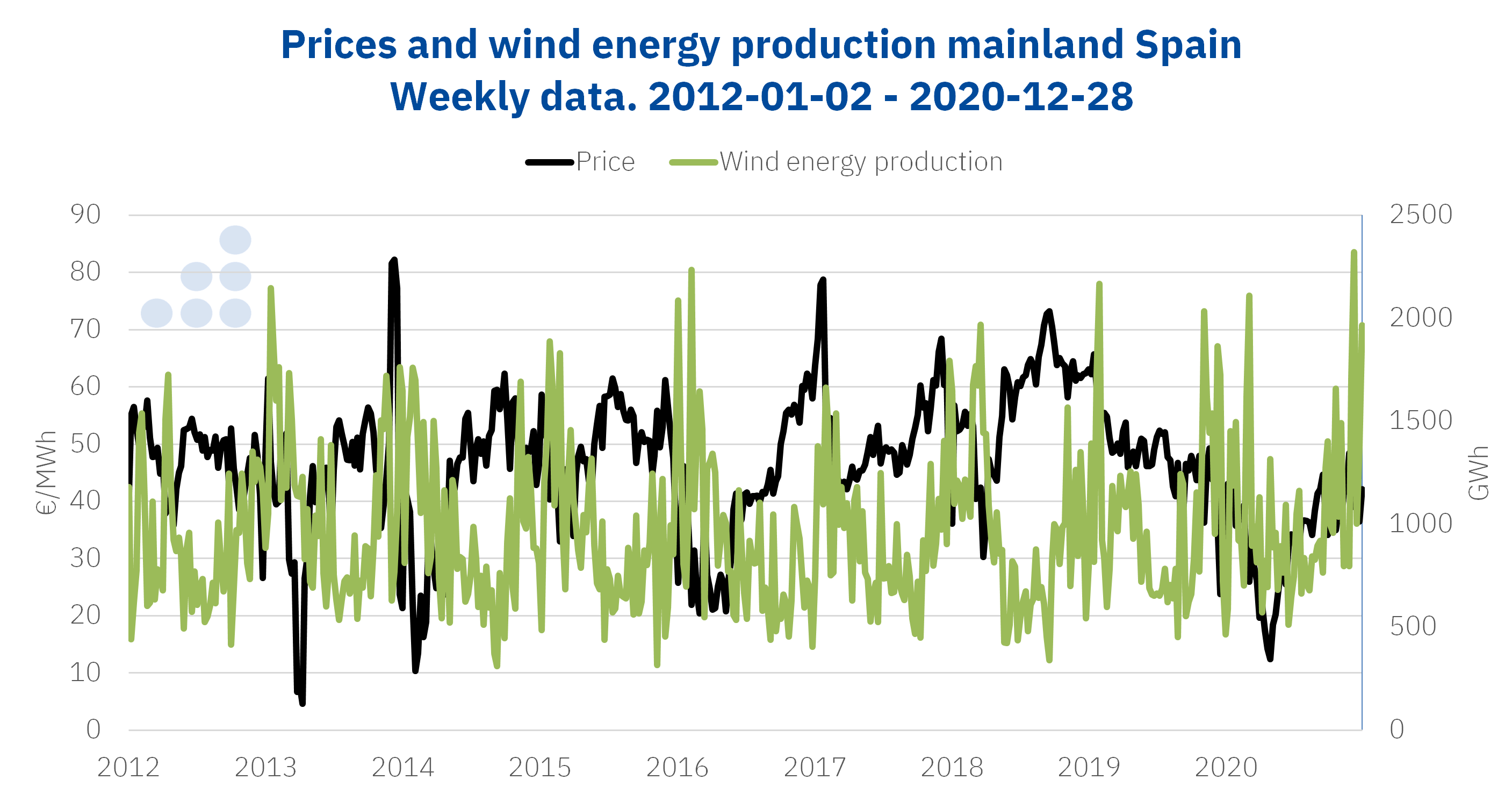 Source: Prepared by AleaSoft Energy Forecasting using data from OMIE and REE.
Source: Prepared by AleaSoft Energy Forecasting using data from OMIE and REE.
2021 values are not included to facilitate the identification of causalities
 Source: Prepared by AleaSoft Energy Forecasting using data from OMIE and REE.
Source: Prepared by AleaSoft Energy Forecasting using data from OMIE and REE.
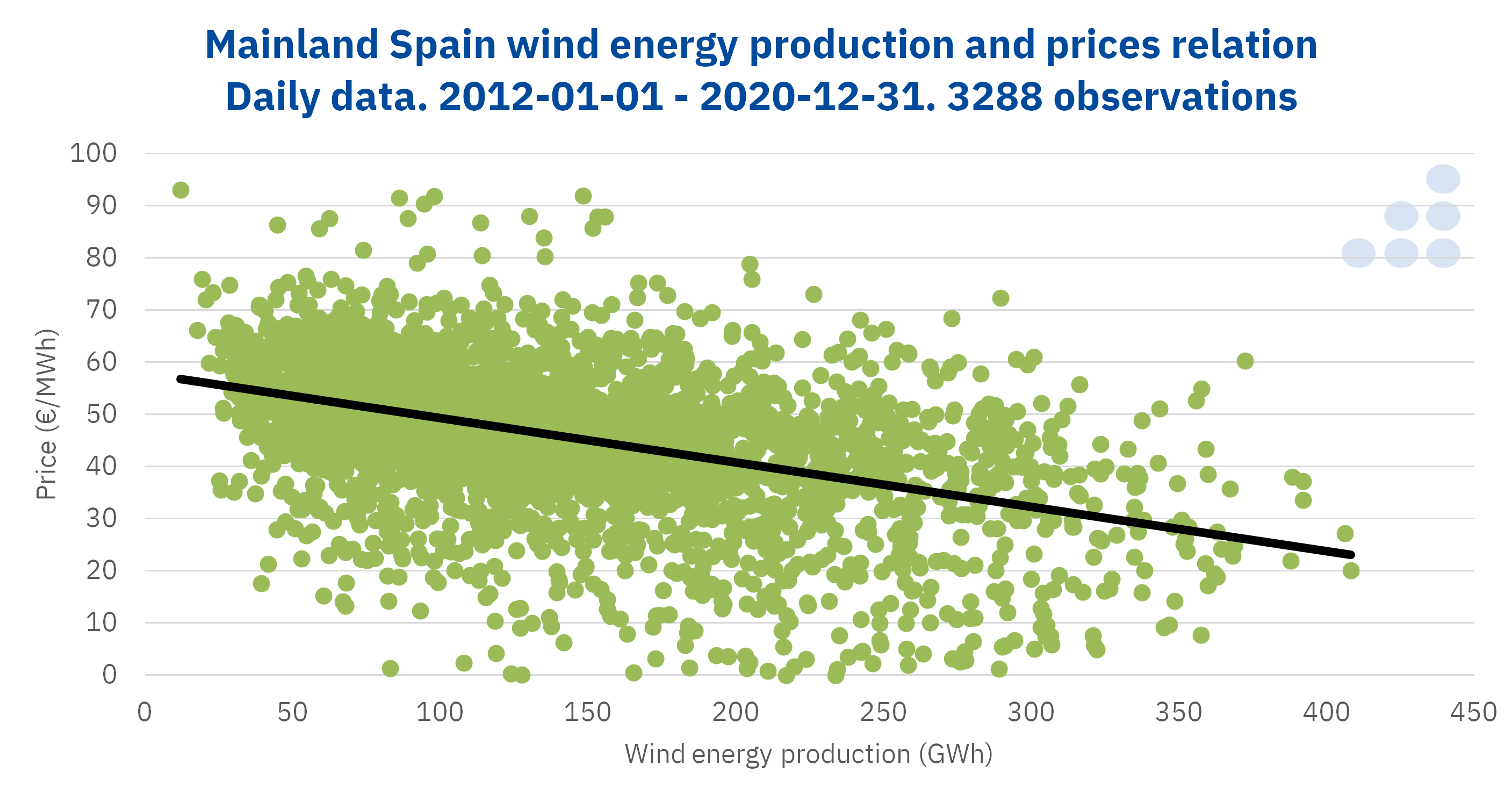 Source: Prepared by AleaSoft Energy Forecasting using data from OMIE and REE.
Source: Prepared by AleaSoft Energy Forecasting using data from OMIE and REE.
 Source: Prepared by AleaSoft Energy Forecasting using data from OMIE and REE.
Source: Prepared by AleaSoft Energy Forecasting using data from OMIE and REE.
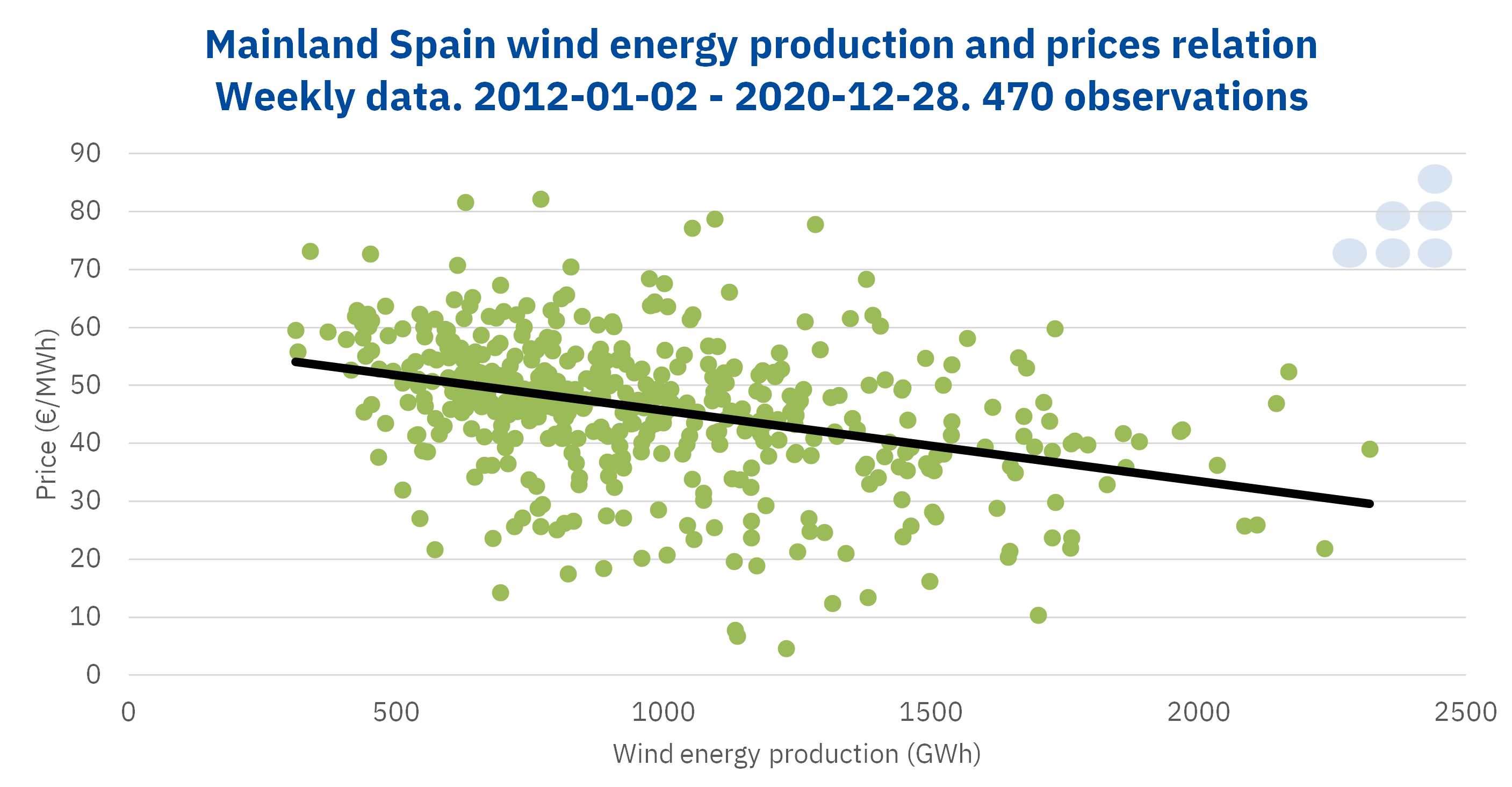 Source: Prepared by AleaSoft Energy Forecasting using data from OMIE and REE.
Source: Prepared by AleaSoft Energy Forecasting using data from OMIE and REE.
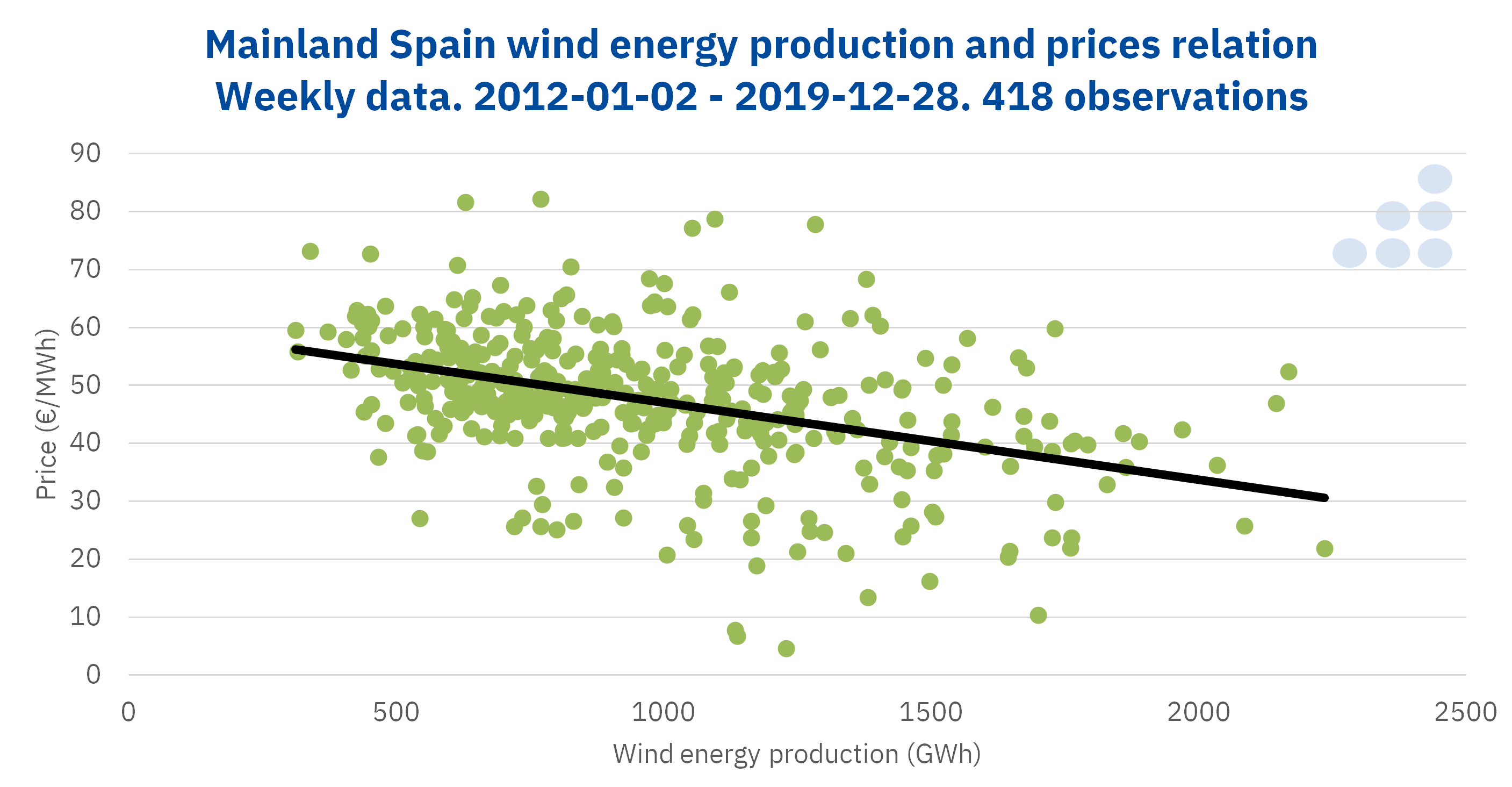 Source: Prepared by AleaSoft Energy Forecasting using data from OMIE and REE.
Source: Prepared by AleaSoft Energy Forecasting using data from OMIE and REE.
Wind energy and international electricity exchanges
European electricity markets are physically interconnected and coupled with each other in the internal electricity market. This allows energy to flow from markets with lower prices to markets with higher prices, thus obtaining more balanced prices and prioritising the production with the least expensive and most efficient technologies. If electricity interconnections between the different countries had unlimited capacity, prices of the entire continent would be the same.
Taking into account the depressive effect of wind energy on prices, when the wind energy production is high, electricity exports from Spain increase.
 Source: Prepared by AleaSoft Energy Forecasting using data from REE.
Source: Prepared by AleaSoft Energy Forecasting using data from REE.
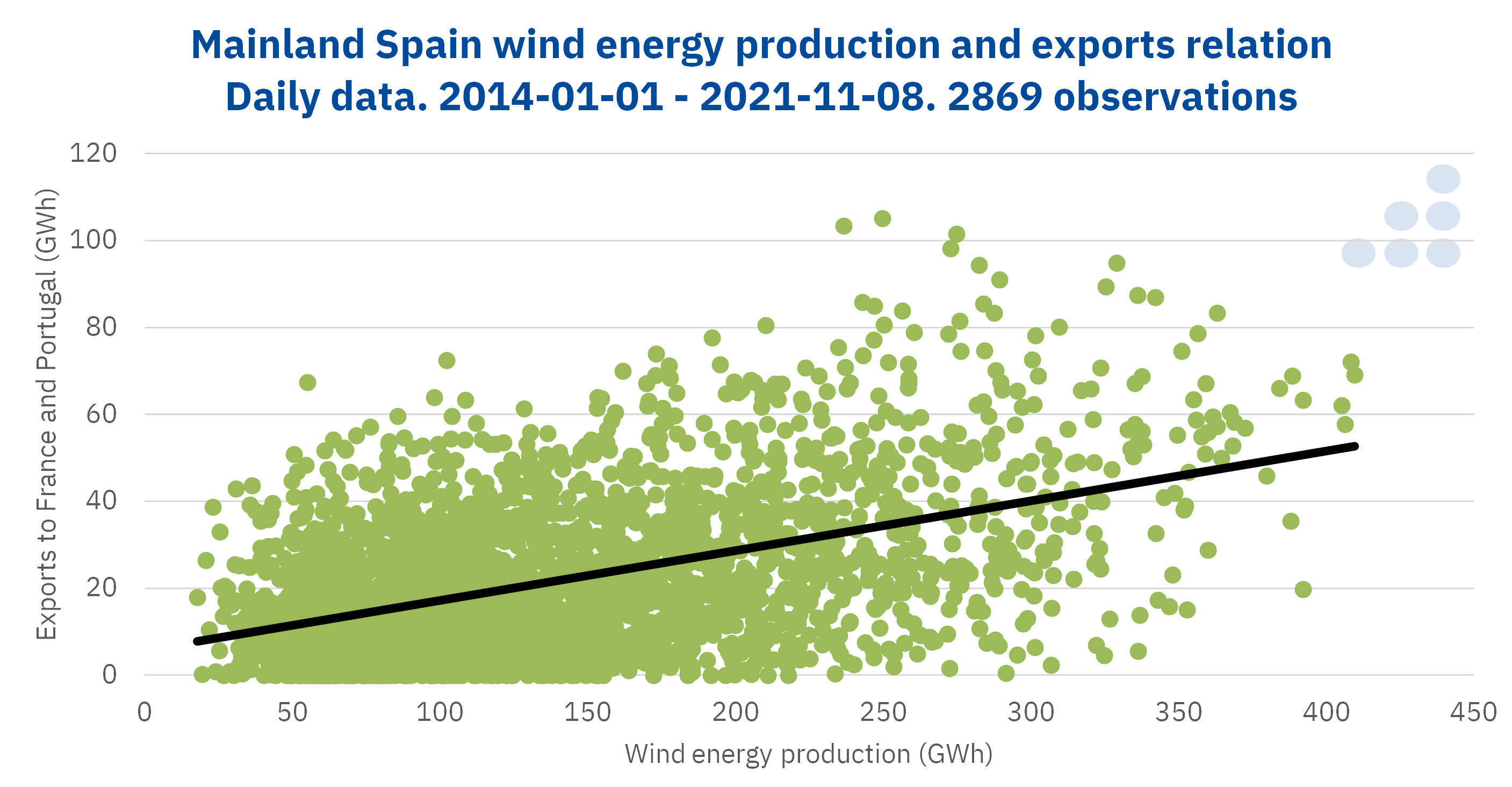 Source: Prepared by AleaSoft Energy Forecasting using data from REE.
Source: Prepared by AleaSoft Energy Forecasting using data from REE.
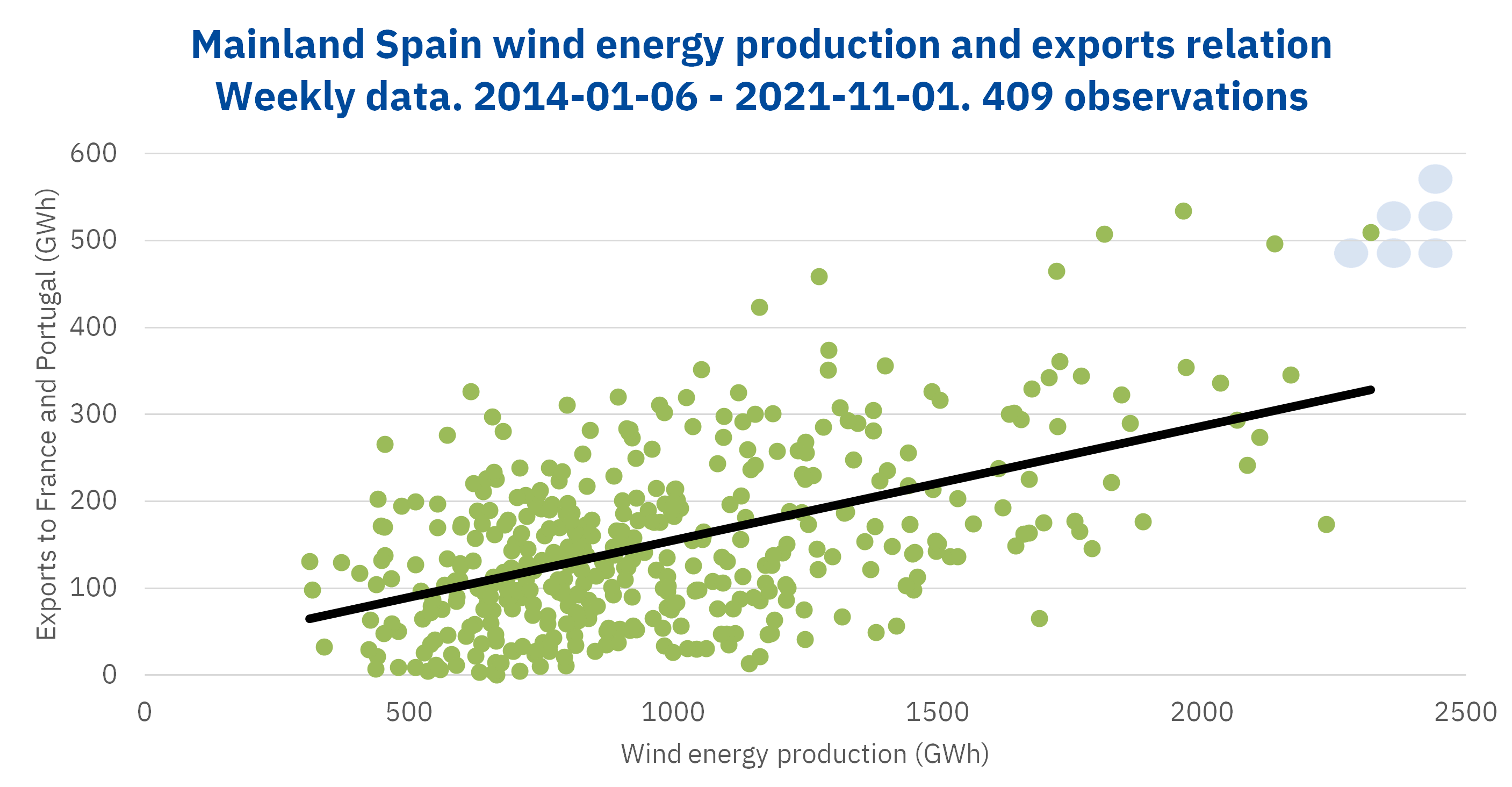 Source: Prepared by AleaSoft Energy Forecasting using data from REE.
Source: Prepared by AleaSoft Energy Forecasting using data from REE.
However, when the wind energy production decreases, Spain stops exporting and electricity imports increase.
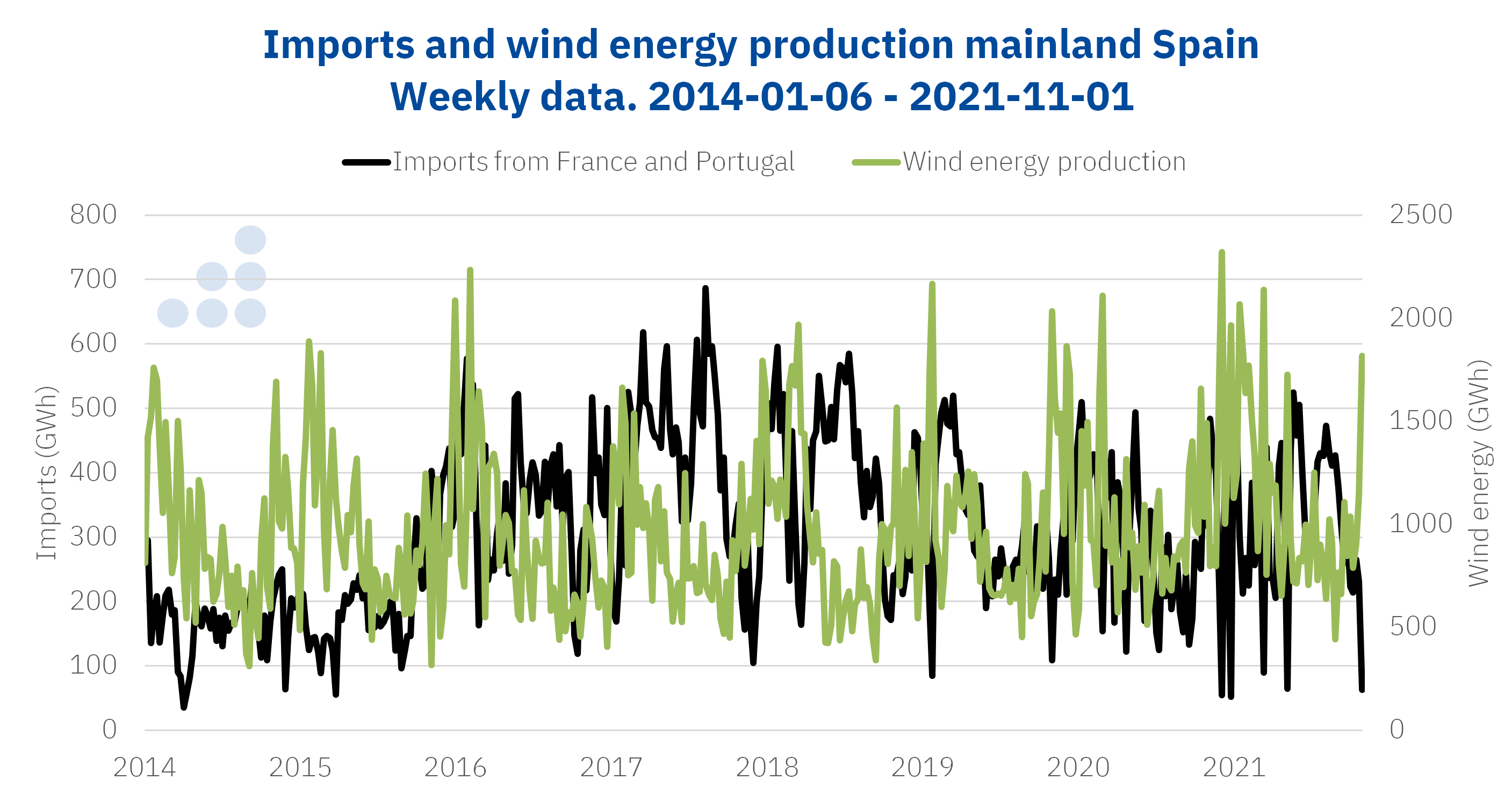 Source: Prepared by AleaSoft Energy Forecasting using data from REE.
Source: Prepared by AleaSoft Energy Forecasting using data from REE.
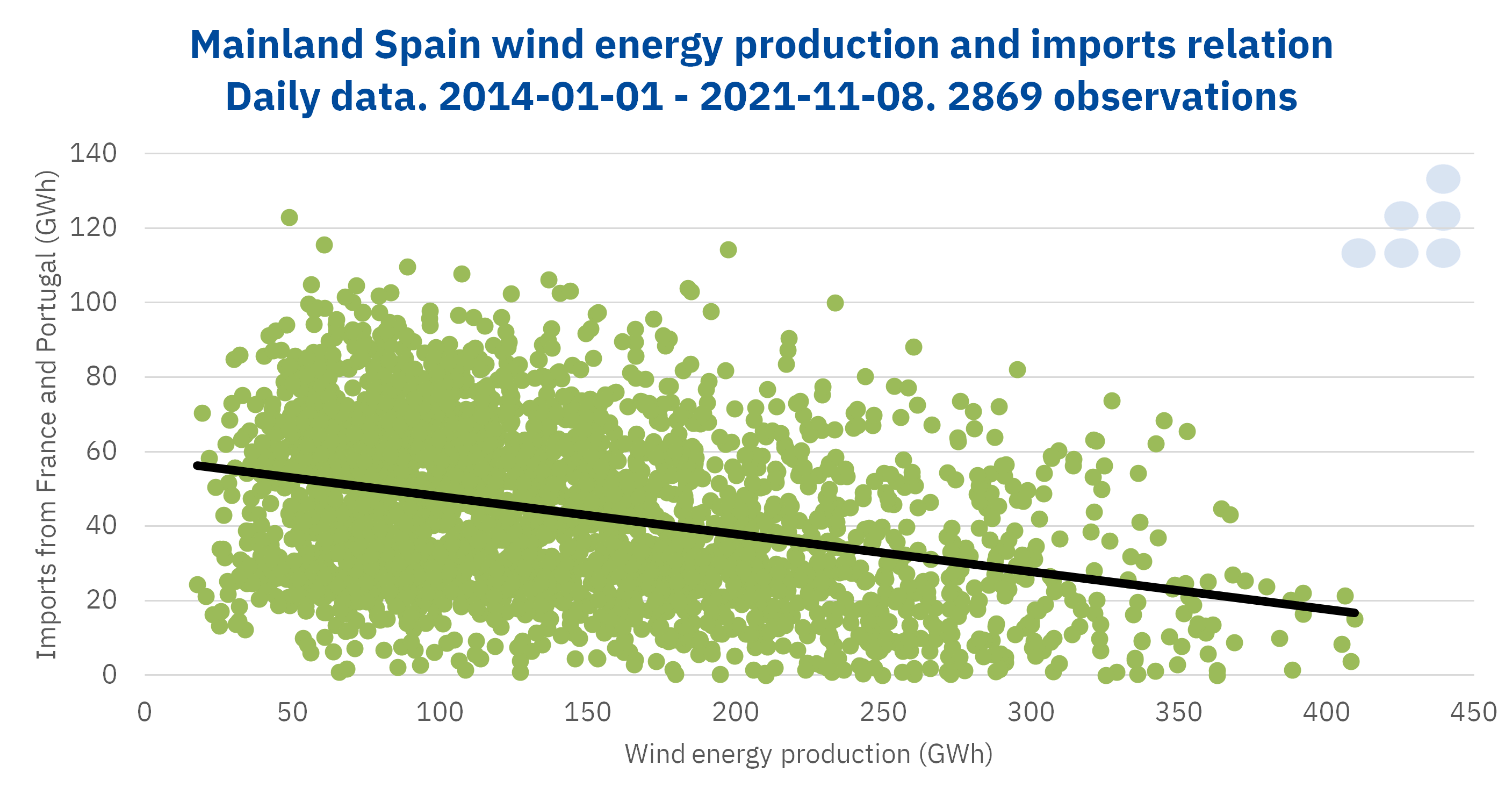 Source: Prepared by AleaSoft Energy Forecasting using data from REE.
Source: Prepared by AleaSoft Energy Forecasting using data from REE.
 Source: Prepared by AleaSoft Energy Forecasting using data from REE.
Source: Prepared by AleaSoft Energy Forecasting using data from REE.
Wind energy and combined cycle gas turbines: a parallel story
Although combined cycle gas turbines broke into the Spanish electricity generation mix in 2002, after wind energy, both technologies developed in parallel. Currently, combined cycle gas turbines occupy the second place in terms of installed capacity in the peninsula, with 24.6 GW. Combined cycle gas turbines and wind energy managed to remove coal from the electricity generation mix and favoured the reduction of CO2 and other greenhouse gases emissions from the electricity sector, which was 64% between 2000 and 2020, because, although combined cycle gas turbines generate emissions, these are lower than those generated by coal power plants.
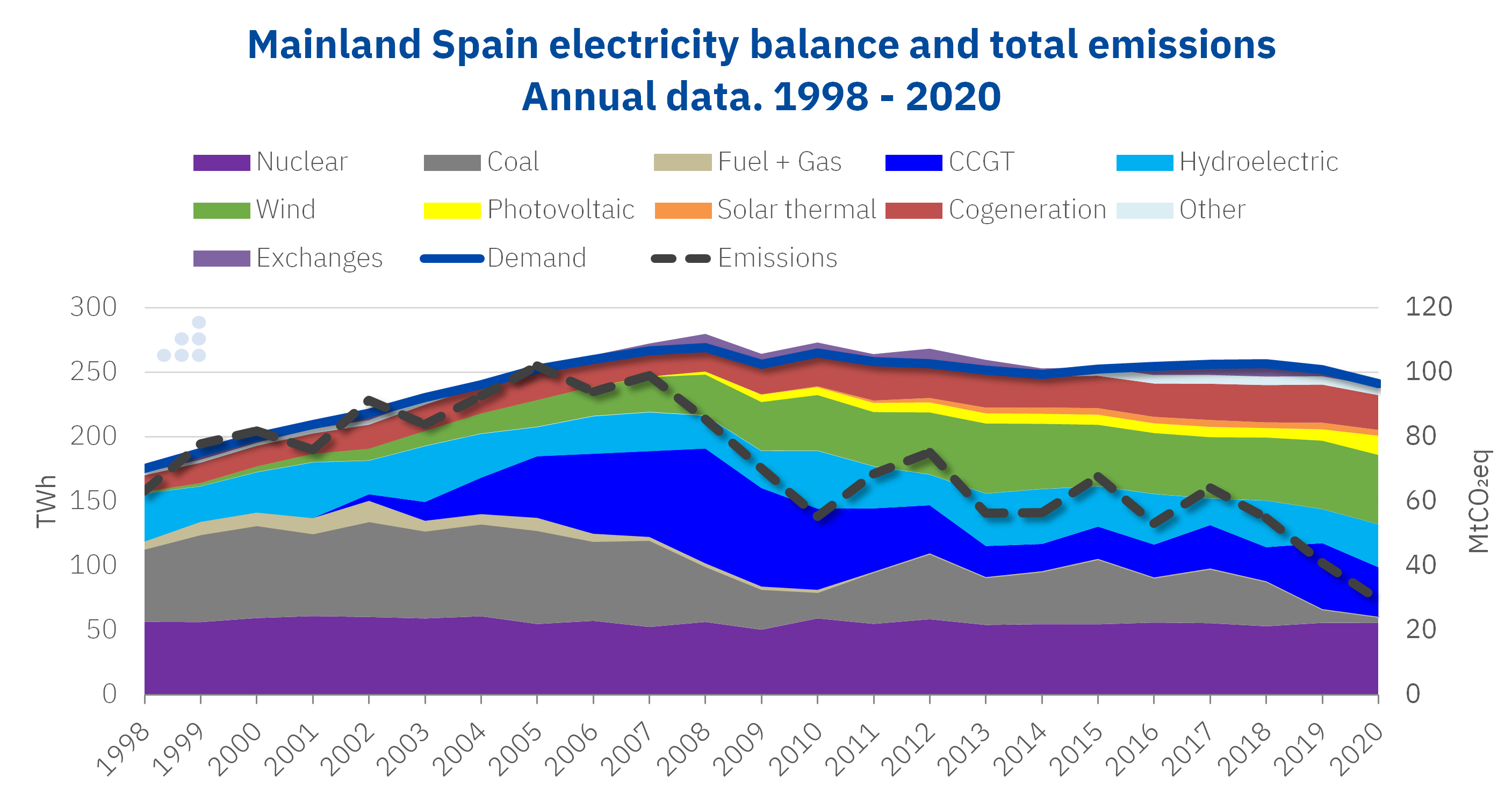 Source: Prepared by AleaSoft Energy Forecasting using data from REE.
Source: Prepared by AleaSoft Energy Forecasting using data from REE.
Wind and combined cycle gas turbine energy production complement each other. When there is a lot of wind energy production, the offers of combined cycle gas turbines are displaced, so their production is lower, while if wind energy production is low, there is more room for combined cycle gas turbines.
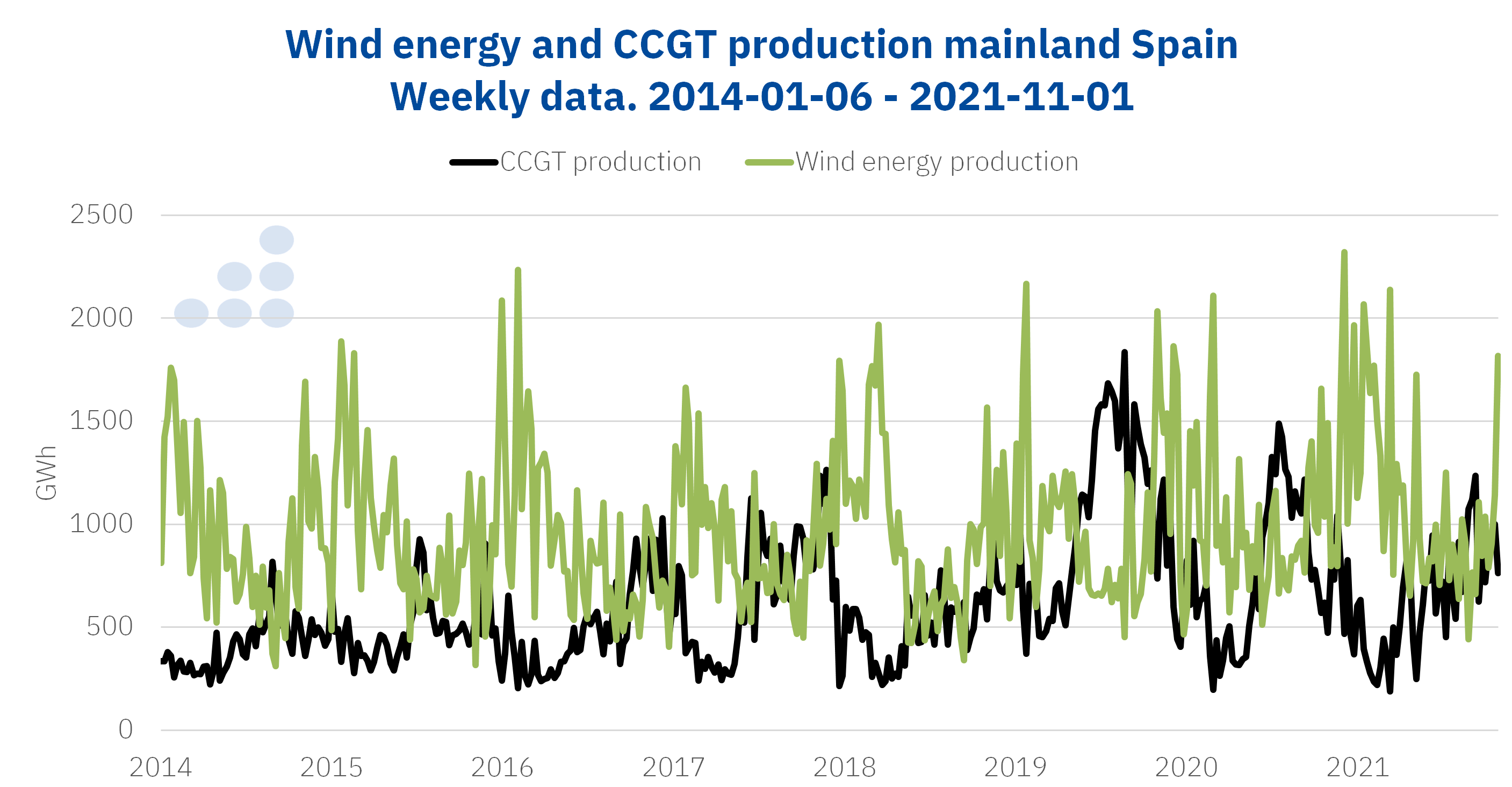 Source: Prepared by AleaSoft Energy Forecasting using data from REE.
Source: Prepared by AleaSoft Energy Forecasting using data from REE.
Wind energy and thermal gap
This inverse relationship also occurs with the thermal gap, that is, with the part of the demand that is not covered with renewable and nuclear energy, because as there is more wind energy, the thermal gap is smaller.
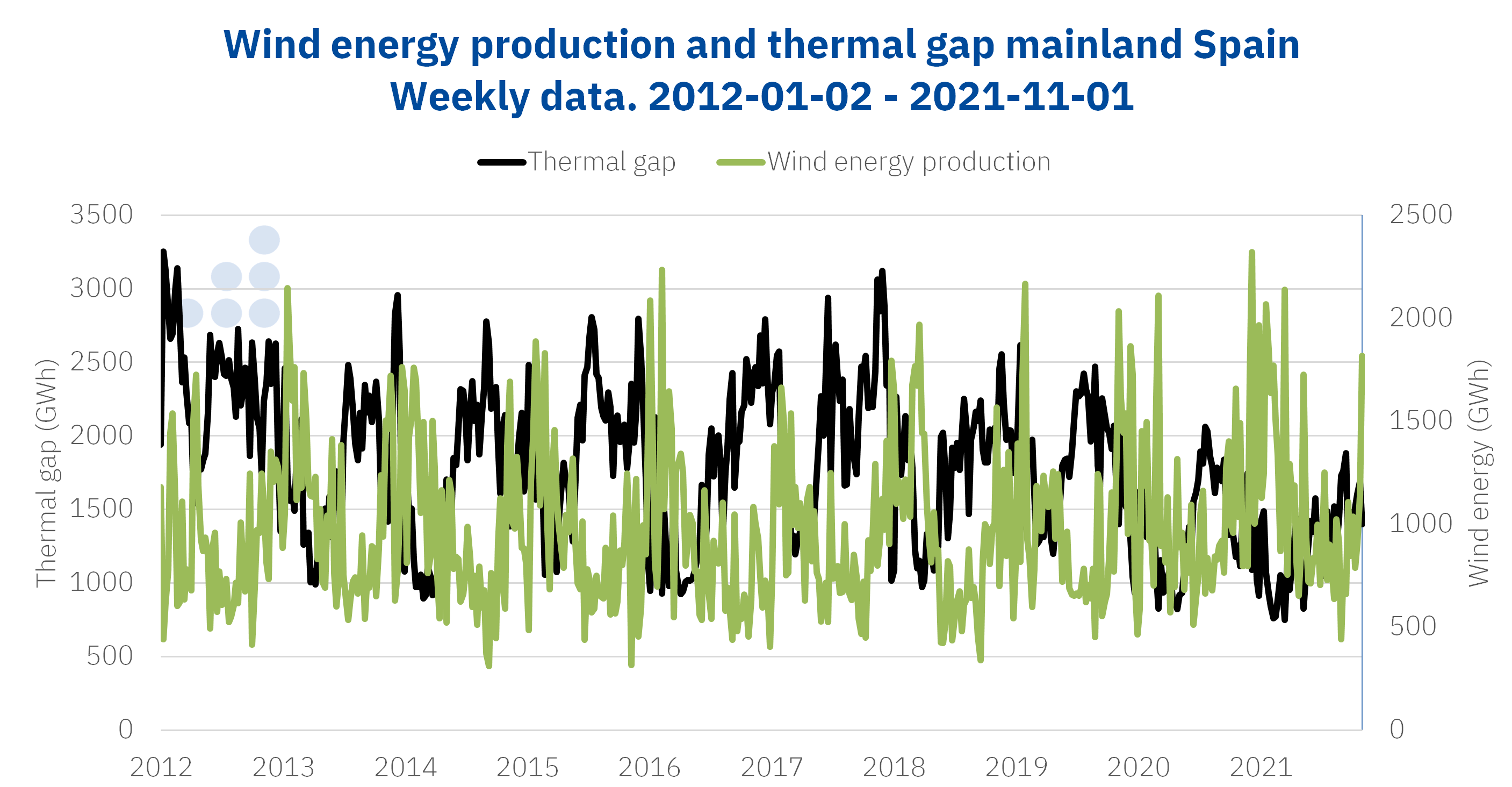 Source: Prepared by AleaSoft Energy Forecasting using data from REE.
Source: Prepared by AleaSoft Energy Forecasting using data from REE.
Wind and photovoltaic energy: allies in the energy transition
The wind and solar photovoltaic energy are called to be the protagonists of the energy transition of the Spanish electricity sector in the coming years. The Integrated National Energy and Climate Plan (NECP) has the projection that in 2030 the capacity of these technologies will rise to 50 GW in the case of the wind energy and up to 39 GW for the photovoltaic energy. Developing both technologies in the Spanish electricity mix is of great importance because they complement each other. On the one hand, the wind energy production is usually higher between October and March, which is a period when the solar photovoltaic energy production is lower. On the other hand, while the photovoltaic energy production profile is very well defined during the sunny hours of the day, the wind energy profile is more volatile and there is usually greater wind energy production at night. Taking these characteristics into account, many developers of renewable energy projects are considering the hybridisation of these technologies to maximise their income.
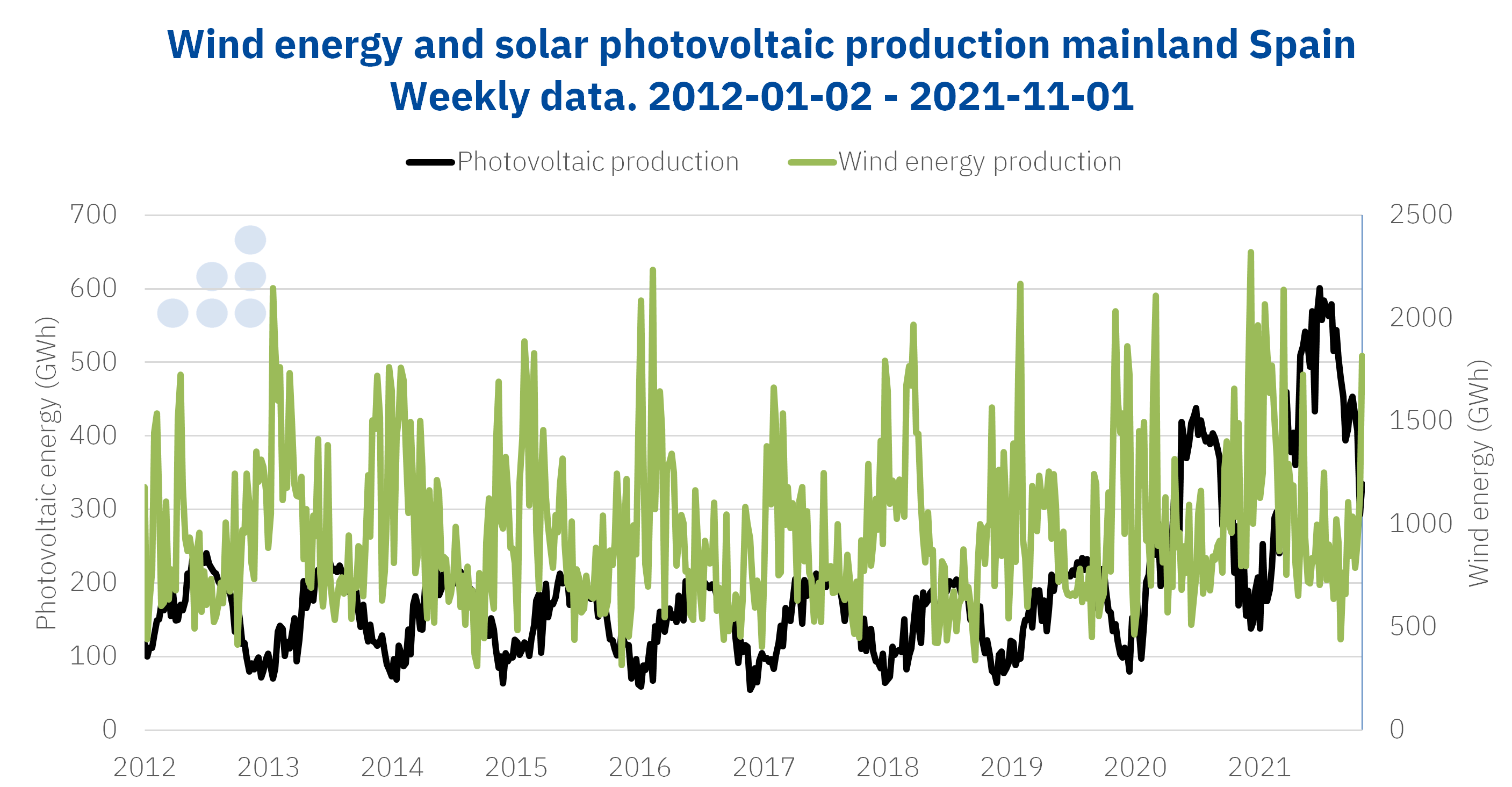 Source: Prepared by AleaSoft Energy Forecasting using data from REE.
Source: Prepared by AleaSoft Energy Forecasting using data from REE.
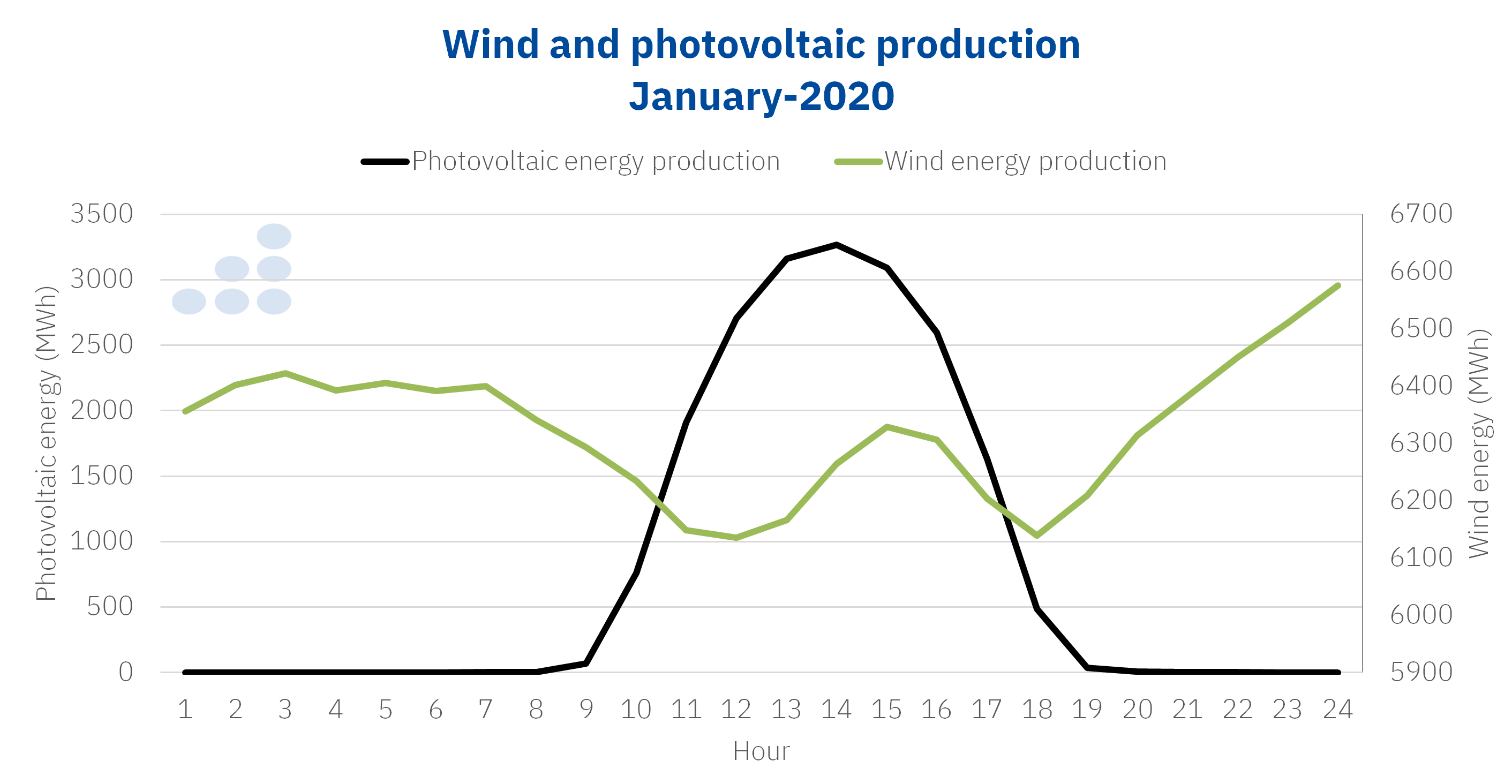 Source: Prepared by AleaSoft Energy Forecasting using data from REE.
Source: Prepared by AleaSoft Energy Forecasting using data from REE.
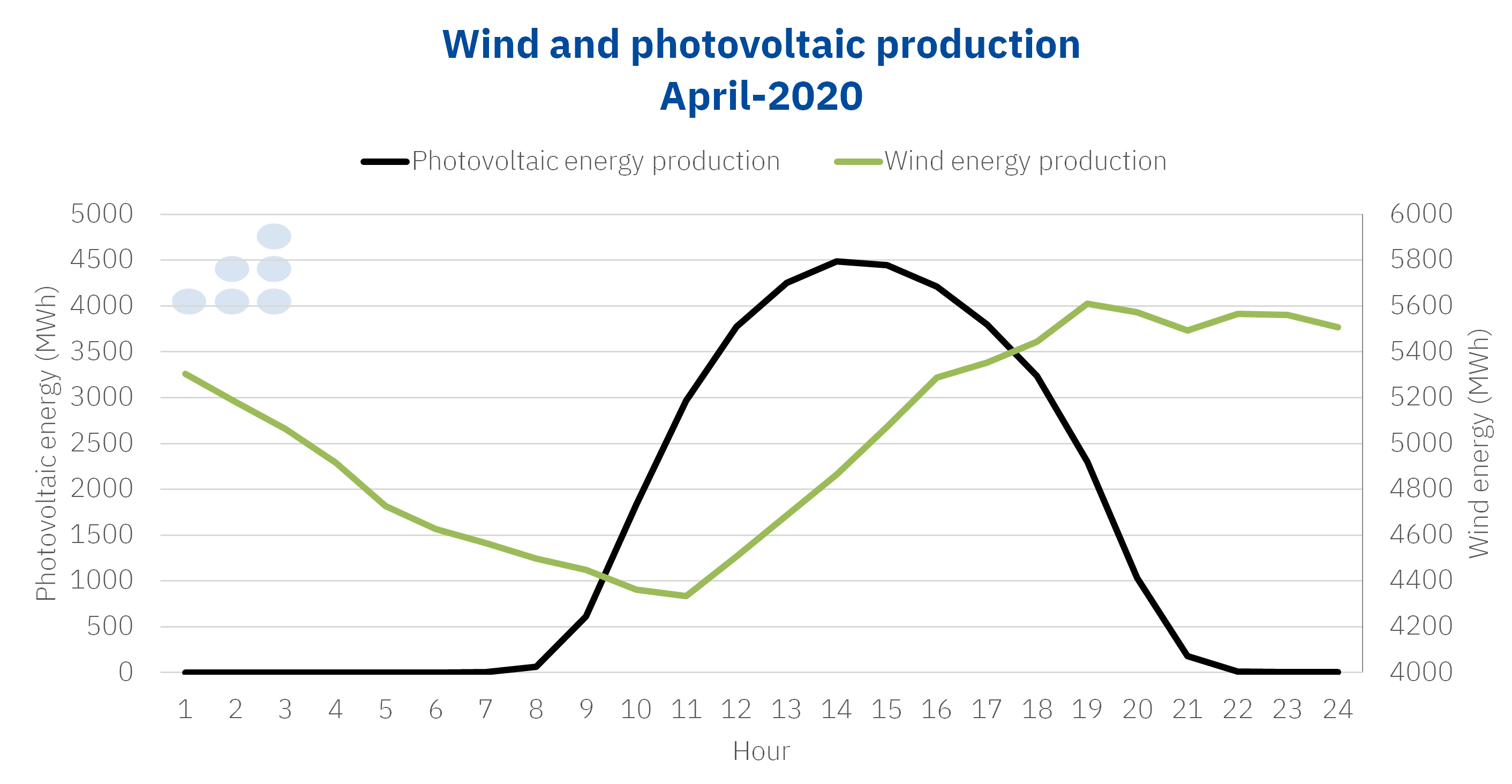 Source: Prepared by AleaSoft Energy Forecasting using data from REE.
Source: Prepared by AleaSoft Energy Forecasting using data from REE.
 Source: Prepared by AleaSoft Energy Forecasting using data from REE.
Source: Prepared by AleaSoft Energy Forecasting using data from REE.
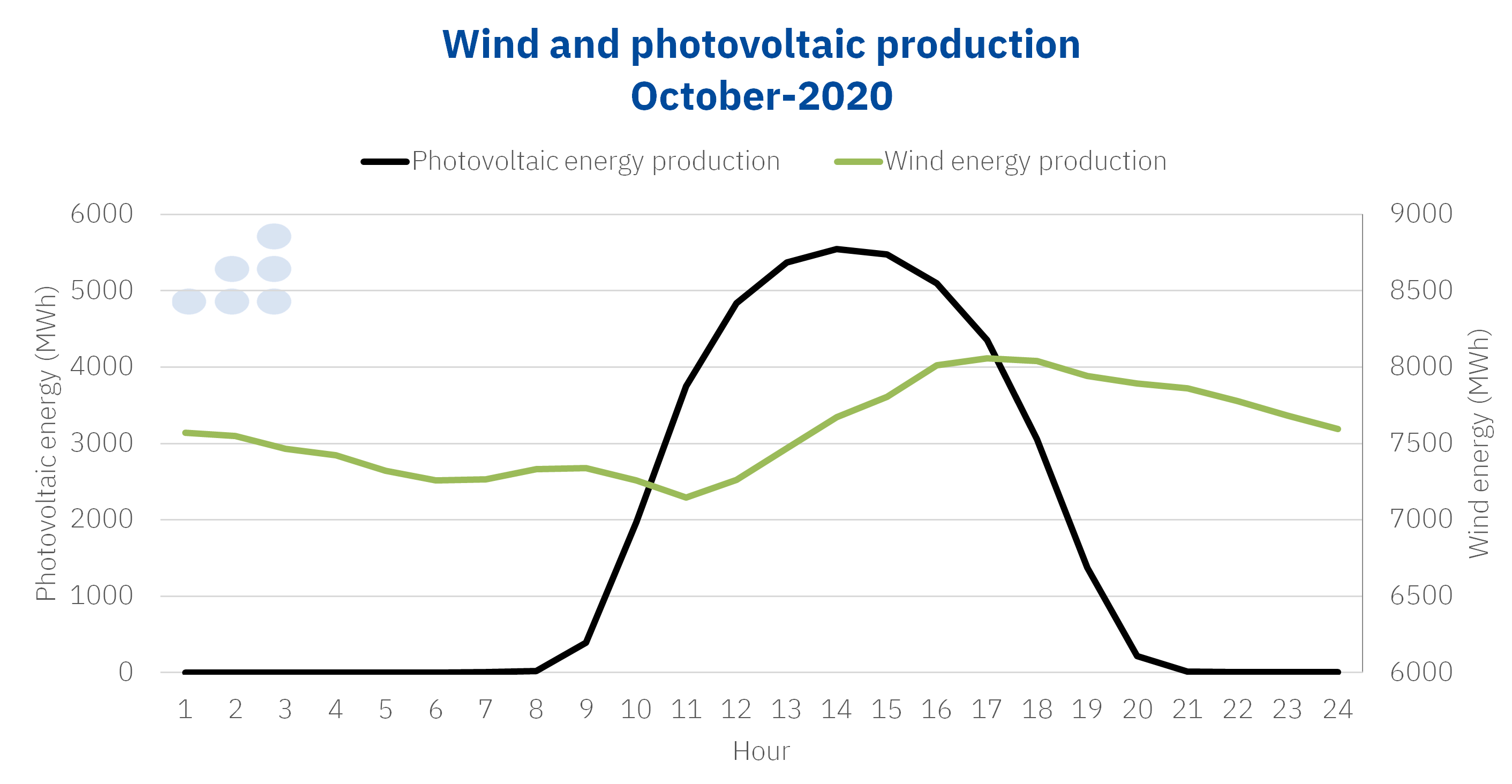 Source: Prepared by AleaSoft Energy Forecasting using data from REE.
Source: Prepared by AleaSoft Energy Forecasting using data from REE.
AleaSoft Energy Forecasting’s analysis on the prospects for energy markets in Europe
Antonio Delgado Rigal, CEO of AleaSoft Energy Forecasting, participated in the AEE conference that was held on November 16 within the framework of GENERA 2021, in which guidelines for understanding the electricity price and the impact of wind energy on it were discussed. Adolfo de Rueda Villén, Director of Electricity Markets at Endesa, Antonio Gómez, Director of Regulation and Legal Advice at Villar Mir Energía and Yolanda Cuéllar Salinas, Director of Market Operation at OMIE, also participated in the conference, and it was moderated by Heikki Willstedt, Director of Energy Policies and Climate Change at AEE.
On November 11, a webinar was held in which speakers from Engie Spain and AleaSoft Energy Forecasting analysed the evolution of European energy markets in the global energy crisis and the financing of renewable energy projects, paying special attention to PPA as a tool to mitigate the market prices risk, comparing them with renewable energy auctions and analysing the impact and consequences of Royal Decree‑law 17/2021 and Royal Decree‑law 23/2021.
The vision of the PPA market for consumers will be one of the topics that will be addressed in the webinar that is being organised at AleaSoft Energy Forecasting for January 13, 2022, in which there will also be the participation of speakers from PwC Spain. In addition, the evolution of European energy markets will be analysed, emphasising prospects from 2022.
Source: AleaSoft Energy Forecasting.

